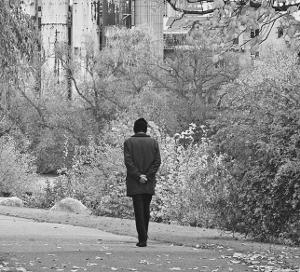Depression and Bipolar Disorder: New Evidence for Light Therapy Treatment

With the days getting colder and shorter during the winter season, you may start to feel a little more down than usual. For some people who deal with seasonal affective disorder (SAD)— a form of depression stemming from shorter days and reduced exposure to sunlight —treatment options like light therapy have been shown to help.
Now, a new study suggests that light therapy may also help relieve symptoms of depression associated with bipolar disorder.
“Light therapy is believed to affect brain chemicals that control our moods or sleep. Also known as bright light therapy or phototherapy, it sometimes can help with conditions like depression or sleep disorders,” says Kevin Caputo, M.D., chair of Psychiatry and vice president of Behavioral Health for Crozer Health.
What the Study Found
The study published in the American Journal of Psychiatry, looked to see if light therapy could impact people dealing with bipolar depression. Over a few weeks, some bipolar depression patients received white light therapy while others received a placebo light therapy.
The group who received white light therapy achieved 68 percent relief from depression symptoms, compared to only 22 percent of patients who received the placebo.
The white light patients were able to return to work and better go about their normal routine than they had before the study. While the results of the study are highly preliminary, it does show that there could be potential for bipolar depression patients to get some relief with light therapy.
What is Light Therapy?
Light therapy is a form of treatment a doctor may recommend to patients dealing with depressive disorders. It’s commonly recommended for people who may be dealing with SAD. This type of therapy can also be an option for people who take antidepressants and are interested in alternative treatment options.
“Light therapy cannot cure SAD or other depressive disorders. It can help ease symptoms, increase a person’s energy or help them feel better in general,” Caputo says.
Light therapy involves using a device called a light box. It increases the patient’s exposure to the type of outdoor light they’re missing during the dark winter months. It’s fairly simple to use: the patient sits near the light box for several timed sessions during the day, which can be done during regular activities like reading or eating. It’s important to note that ultraviolet light, tanning lamps or heat lamps cannot be used as a light for light therapy. A doctor can recommend which type of light therapy box might be right for you.
People with bipolar disorder should receive light therapy with a doctor’s supervision.
“This type of therapy can trigger hypomania, causing a patient to switch into a manic or hypomanic episode,” Caputo says. “Undergoing light therapy that is prescribed and monitored by a doctor can ensure there is treatment available if the patient has an episode.”
If you or someone you know might benefit from light therapy, talk to your doctor.
“It’s important to talk to a doctor before starting any alternative therapies. Let them know if you are thinking about combining them with medical treatments,” Caputo says. “It might not be safe to stop conventional treatments and only rely on alternative therapies like light therapy. Your doctor can review your medical history, make recommendations and help monitor your experience with light therapy.”


